FORT LEWIS, Wash - Technology combined with old-fashioned infantry tasks last week for an intense, realistic day of training for a Fort Lewis artillery unit.
Soldiers from 3rd Battalion, 17th Field Artillery Regiment staged an air-assault raid April 11, banking in, landing and dashing from CH-47 Chinook helicopters to nearby buildings in Regenburg mock village to nab a high-value target.
The precision strike made use of the Land Warrior System, an 11-pound equipment array worn by Soldiers, integrating radios, computers, optics and Global Positioning Systems to give them heightened situational awareness on the battlefield.
The 5th Brigade, 2nd Infantry Division artillerymen joined fellow "Redlegs" across the Army in preparing for nonstandard missions when they deploy.
"Some artillery units in theater have been asked to do those sorts of things," Maj. Patrick Gaydon said, 3-17 FA executive officer, "so we're preparing ourselves. All our batteries are doing unique training."
When word came down that the brigade commander had directed 5th Bde., 2nd Inf. Div. companies and batteries to look for opportunities to practice maneuver on the battlefield, Bravo Battery, 3-17 FA commander, Capt. Geoff Marberry, took the guidance literally. He coordinated with A Company, 159th Aviation Regiment for Chinooks for an air-assault insertion of his cannoneers to capture a time-sensitive target. He then called 2nd Battalion, 1st Infantry Regiment for support in forming an outer security cordon around the mock village, arranged for 17 Arabic speakers to play roles as insurgents as well as civilians on the battlefield and obtained Land Warrior systems from Program Executive Office Soldier.
"Eleven of the Soldiers flying in (used) the Land Warrior with the GPS receiver, the little flip-down screens, all of that," Gaydon said. "So we're helping them test this to see when you're moving at 120 knots whether the system can track itself."
"It's a pretty historic day for the Land Warrior System, the brigade, battalion and my battery," Marberry said. "We're the first ones outside of Iraq to try them out and test them (on an air assault mission), It's an incredible system. It's really going to enhance our ability to command and control troops out here on the ground."
Doug Fisher, civilian trainer with the Army's Project Manager Soldier Warrior under PEO Soldier, agreed. "I think it would be safe to say that Bravo, 3-17 is the first element to officially conduct an air assault with the Land Warrior system here on Fort Lewis, especially being an artillery unit. It is a historic day."
Soldiers in 2005 and 2006 tests at Fort Lewis gave mediocre reviews to the LWS, leading Congress to consider halting funding for the system in February 2007.
But 4th Battalion, 9th Infantry Regiment, the 4th Brigade, 2nd Infantry Division unit testing the equipment in combat in Iraq, grew to appreciate its capabilities. Positive Manchu Battalion reports on LWS from Iraq led to the Army's keeping the system. Soldiers who initially complained about its weight and reliability grew to depend on it.
The Army Times indirectly quoted 4-9 Inf. Sgt. Daniel Garza, in its June 26, 2007 issue, that he had "never trusted his Land Warrior System during training at Fort Lewis. But after relying on the digitized ensemble in Iraq, the recon platoon (member) now says he wouldn't go outside the wire with out it."
"Like any new piece of equipment," Fisher said, "the old timers are reluctant to accept new technology, but the younger-generation guys say 'Wow, this is great.'"
The system passed its test at Regenburg last week.
Chinooks hovered 2,000 feet above the mock village while squad leaders snapped digital photos of the mock city, then imported them for graphic display of the section of the city they targeted.
"You've got your graphics there and you're seeing yourself move," Fisher said. "You can't beat that. You can't get that on a 1-over-50,000 map."
An icon marked the house to be raided on the 11 LWS digital displays. With the area templated, Soldiers preplotted the main effort as well as support positions around the objective. When the target moved, one LWS-equipped Soldier alerted the rest by simply moving the icon on his screen.
"It saves a lot of time," Fisher said.
"The radio traffic has been cut in half because 'why do I need to ask when I can see it''"
Once on the ground, squad- and team leaders guided their Soldiers through the streets, encountering friendly and militant villagers dressed in traditional Arab attire.
"The way the war is going," Marberry said, "it's important to get the right people and you can't always tell. Soldiers need to be trained on what's a threat and what's not a threat. So we have some of them mixed in."
A sniper's shot touched off an intense fire fight in an adjacent section of the village while the snatch team spirited the HVT out of a building and further out of danger. An aid-and-litter team followed with a wounded 3-17 FA Soldier.
"My Soldiers have been doing a lot of close-quarters marksmanship, a lot of squad and team live-fire exercises," Marberry said. "This is an opportunity for them to apply what they were trained on. It really is like we've been practicing for the Super Bowl and this is the Super Bowl."
Static load training ensured the 3-17 FA Soldiers knew how to safely board and exit helicopters under swirling rotors. A daylong introduction to the Land Warrior System and a follow-on class specific to the Regenburg mission capped the battery's preparations.
"Leaders were very receptive," Fisher said of the LWS training. "They grasped the system very well. They were excited to implement the system, the graphics and imagery, all the things that conventional Soldiers don't have, onto the objective area."
The day before the exercise, Soldiers were busy in the battery area going through rehearsals and precombat checks. Leaders used LWS digital imagery to review the shape and size of the landing zone.
Marberry had given his operations order the night before and all the platoon leaders gave their orders. The battery commander said for many of his younger leaders and Soldiers, it was their first experience with infantry troop-leading preparations. For all the aircraft and high-tech equipment, mission accomplishment hung on basic Soldier skills. And from the battery leaders' perspective, the morning was a success.
"All the credit goes to the Soldiers," said B Battery 1st Sgt. Arrauuf Muhammad. "This is good stuff. We're the first ones in the brigade to train on this. We have a lot of young Soldiers and they're really enjoying it."
The battery executive officer, 1st Lt. Jason Smartt, credited senior leadership with loosening the reins on junior leaders to develop meaningful training. "When you have leaders like this with high maturity," Smartt said, "and they are free to train as they want, they'll do well."
Marberry noted his leaders could have been in better position to influence the action, but overall, he gave his cannoneers a "go" for their first formal infantry mission.
"We put on a little bit of a show today," Marberry said. "My men were really motivated, aggressive, really focused on getting done what they needed to get done. They didn't get bogged down with the contact, they pushed through and only took one casualty. They did well."
Fisher leaned against the prop blast and signaled thumbs-up as the CH-47s lifted the Soldiers and their high-value captives off the landing zone.
"Not bad for a bunch of cannon cockers," he said.
Don Kramer writes for the Fort Lewis Northwest Guardian
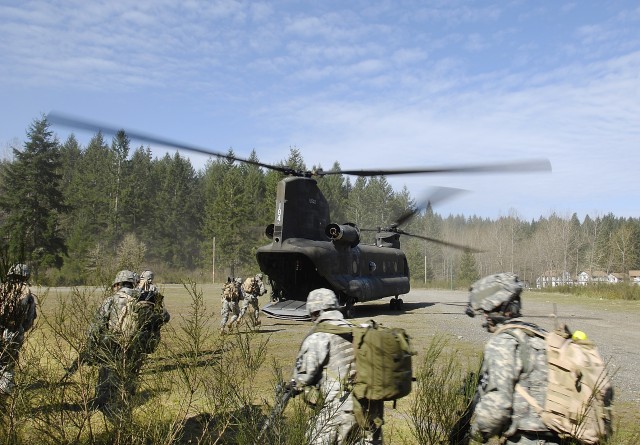
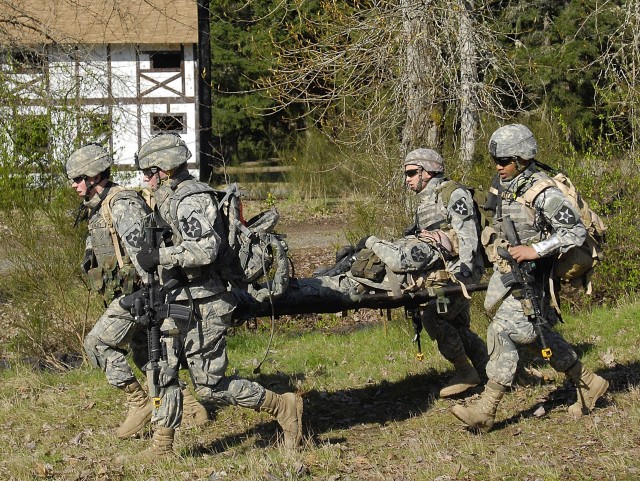
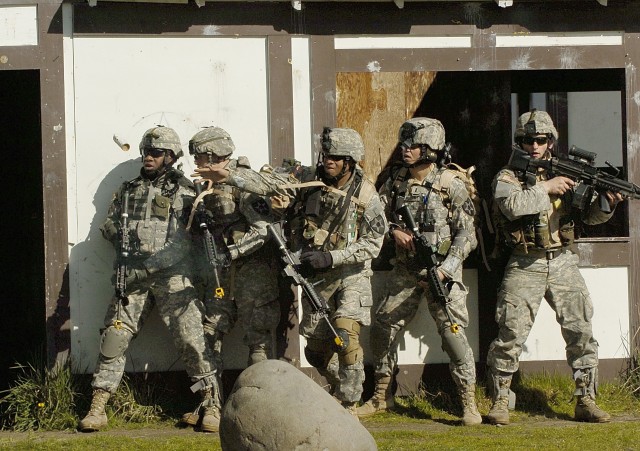
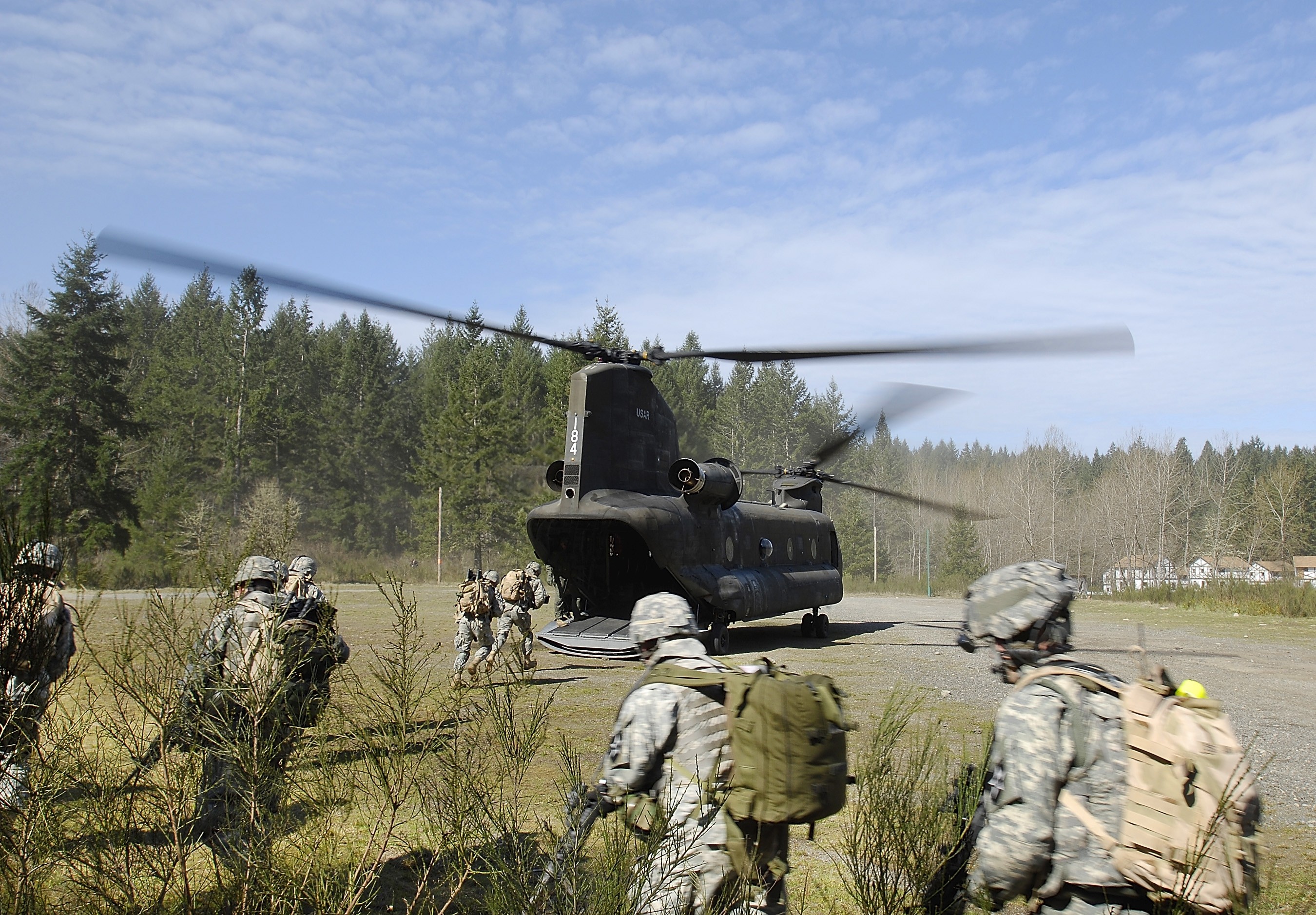
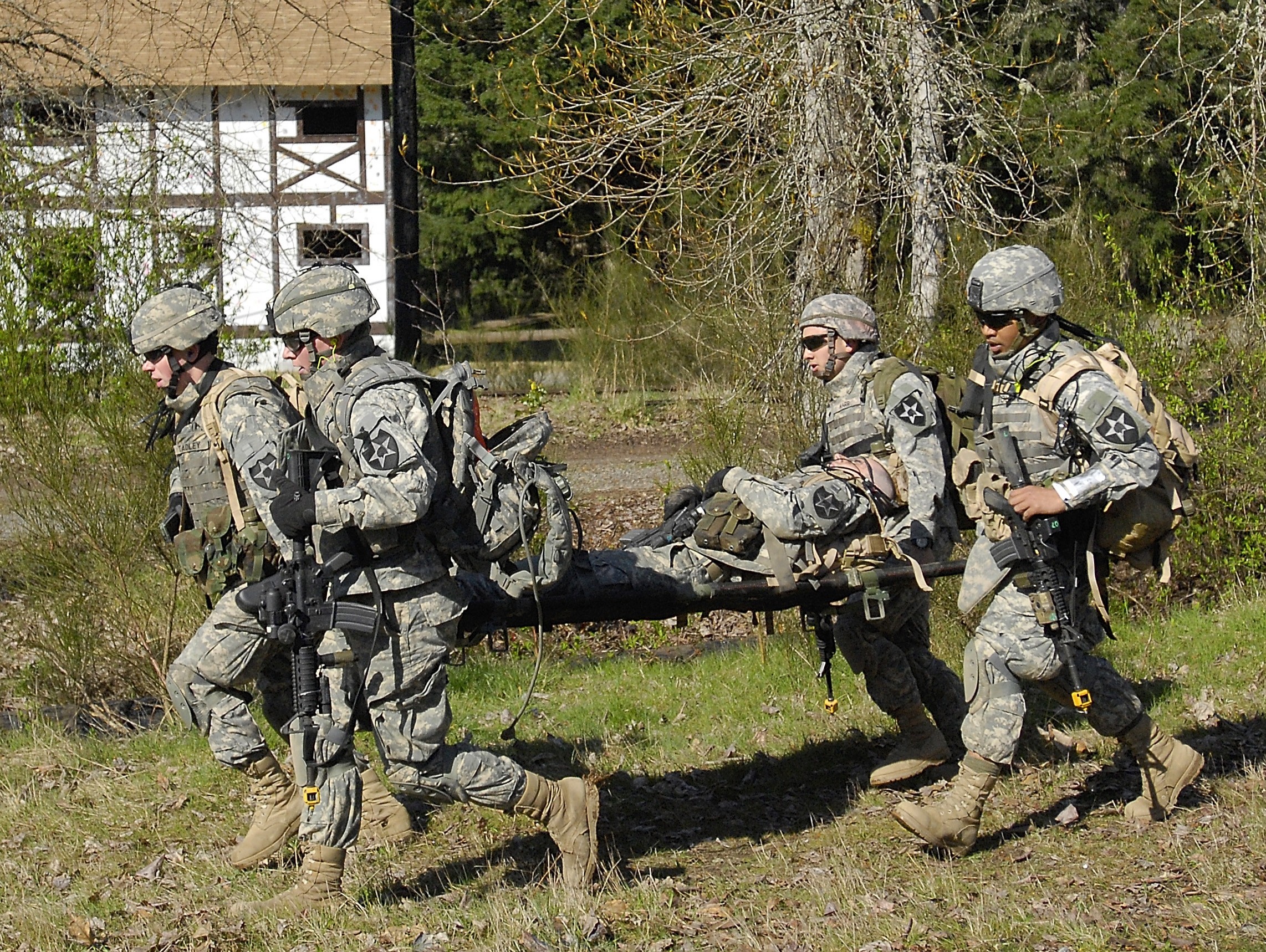
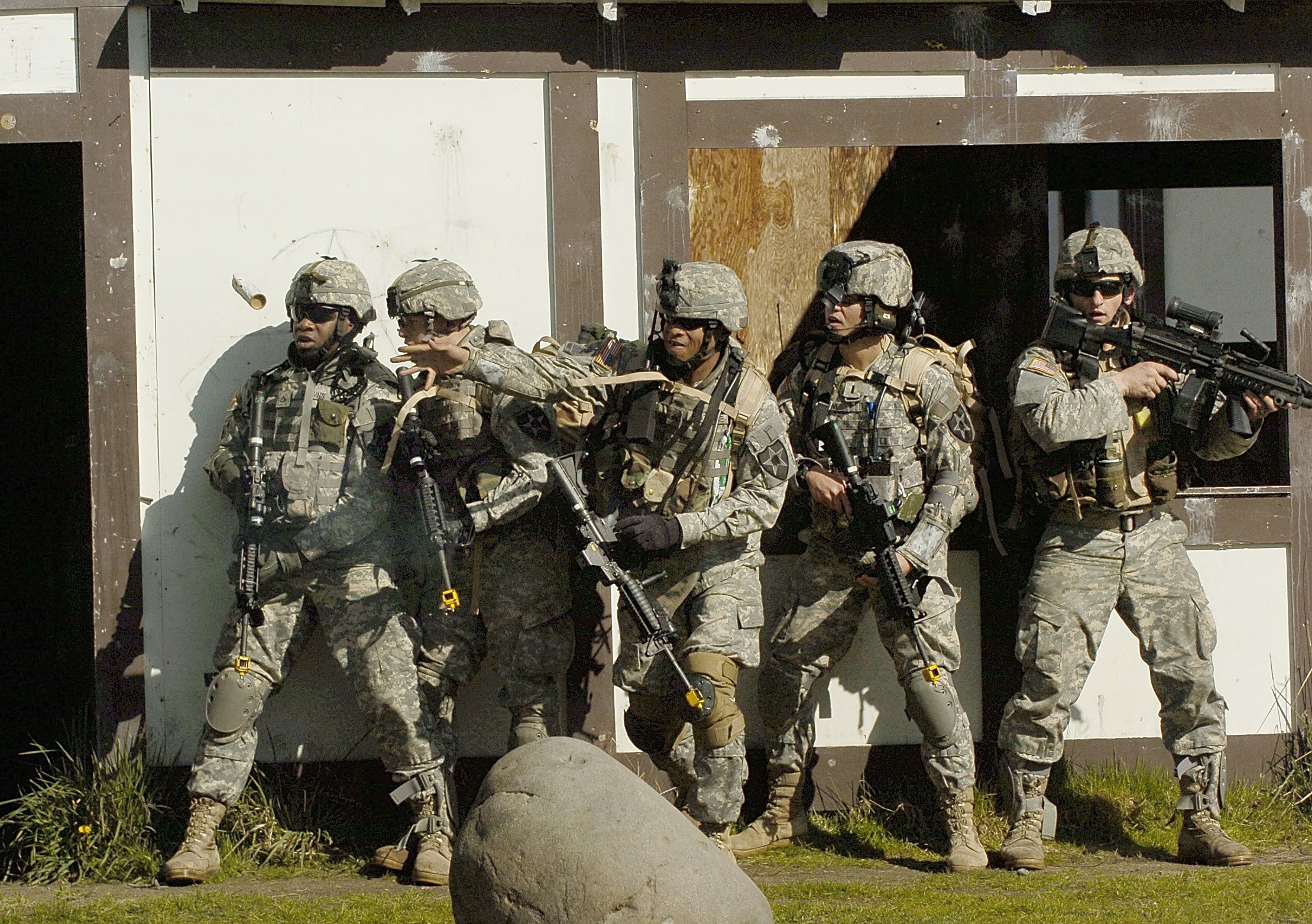
Social Sharing